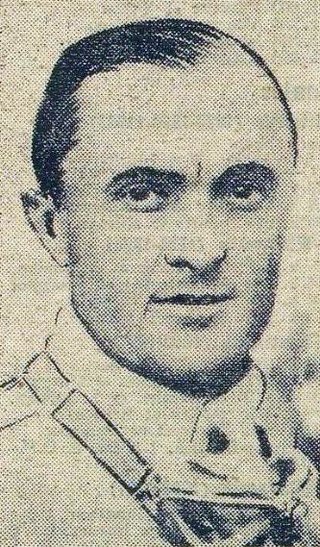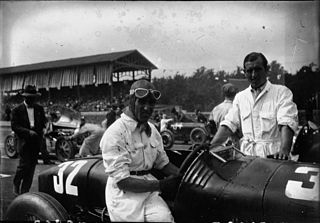Grand Prix motor racing, a form of motorsport competition, has its roots in organised automobile racing that began in France as early as 1894. It quickly evolved from simple road races from one town to the next, to endurance tests for car and driver. Innovation and the drive of competition soon saw speeds exceeding 100 miles per hour (160 km/h), but because early races took place on open roads, accidents occurred frequently, resulting in deaths both of drivers and of spectators. A common abbreviation used for Grand Prix racing is "GP" or "GP racing".

The Italian Grand Prix is the fifth oldest national motor racing Grand Prix, having been held since 1921. Since 2013, it has been the Grand Prix held the most times, with 93 editions as of 2023. It is one of the two Grands Prix which has run as an event of the Formula One World Championship Grands Prix every season, continuously since the championship was introduced in 1950. Every Formula One Italian Grand Prix in the World Championship era has been held at Monza except in 1980, when it was held at Imola.

Road racing is a North American term to describe motorsport racing held on a paved road surface. The races can be held either on a closed circuit or on a street circuit utilizing temporarily closed public roads. The objective is to complete a predetermined number of circuit laps in the least amount of time, or to accumulate the most circuit laps within a predetermined time period. Originally, road races were held almost entirely on public roads. However, public safety concerns eventually led to most races being held on purpose-built racing circuits.

The Monza Circuit is a 5.793 km (3.600 mi) race track near the city of Monza, north of Milan, in Italy. Built in 1922, it was the world's third purpose-built motor racing circuit after Brooklands and Indianapolis and the oldest in mainland Europe. The circuit's biggest event is the Italian Grand Prix. With the exception of the 1980 running when the track was closed while undergoing refurbishment, the race has been hosted there since 1949.

The 1971 Italian Grand Prix was a Formula One motor race held at Monza on 5 September 1971. It was race 9 of 11 in both the 1971 World Championship of Drivers and the 1971 International Cup for Formula One Manufacturers.

The 1986 Italian Grand Prix was a Formula One motor race held at Monza on 7 September 1986. It was the thirteenth race of the 1986 Formula One World Championship.

The 1987 Italian Grand Prix was a Formula One motor race held at Monza on 6 September 1987. It was the eleventh race of the 1987 Formula One World Championship. It was the 57th Italian Grand Prix and the 52nd to be held at Monza. The race was held over 50 laps of the 5.8-kilometre (3.6 mi) circuit for a race distance of 290 kilometres (180 mi).

The 2003 Italian Grand Prix was a Formula One motor race held on 14 September 2003 at the Autodromo Nazionale di Monza, Monza, Italy. It was the fourteenth race of the 2003 Formula One season and the eighty-seventh Italian Grand Prix. The 53-lap race was won by Michael Schumacher driving for Ferrari after starting from pole position. Juan Pablo Montoya finished second in a Williams car, with Rubens Barrichello third in the other Ferrari. Marc Gené replaced the injured Ralf Schumacher in the Williams for this race, scoring his highest ever Formula One finish and his last points. Until the 2023 race, this was the shortest-duration fully completed Formula One World Championship race. The race was completed with the fastest ever average race speed of 247.585 km/h.

The 1955 Formula One season was the ninth season of FIA Formula One motor racing. It featured the sixth World Championship of Drivers, which was contested over seven races between 16 January and 11 September 1955. The season also included several non-championship races for Formula One cars.

Wolfgang Alexander Albert Eduard Maximilian Reichsgraf Berghe von Trips, also simply known as Wolfgang Graf Berghe von Trips, was a German racing driver. Nicknamed "Taffy" by friends and fellow racers, he was the son of a noble Rhineland family.

Jean Marie Behra was a Formula One driver who raced for the Gordini, Maserati, BRM, Ferrari and Porsche teams.

Emilio Materassi was an Italian Grand Prix motor racing driver.

The 1931 Grand Prix season was a watershed year, with the advent of the AIACR European Championship. After several years of Grand Prix racing in the doldrums with little technical development, 1931 saw new models come from all three main manufacturers: Bugatti, Maserati and Alfa Romeo.

The 1932 Grand Prix season marked the second year of the AIACR European Championship. It saw the debut of Alfa Romeo's sensational new Tipo B and with it, Tazio Nuvolari won the Championship driving for the Alfa Corse works team. The 40-year old Nuvolari won two of the three rounds and was second in the other. Still running to a Formula Libre rules for the cars, the regulations were revised to set the races to be between five and ten hours. However, all three national committees ran their races to the minimum time-limit.

The 1933 Grand Prix season was an intermediate year, as it would be the last season for the current AIACR regulations before a new weight-formula was introduced in 1934. As such, the European Championship was not held and the manufacturers held back on further developments of their existing models. Alfa Romeo, following an Italian government financial bailout and like Mercedes-Benz the previous year, had shut down its Alfa Corse works team. Scuderia Ferrari, their regular customer team took up the role of racing Alfa Romeos and a number of ex-works drivers moved across to join their ranks. They were not allowed, however, to buy the impressive Tipo B that had been so dominant in the previous season.

The 1927 Grand Prix season was the third AIACR World Manufacturers' Championship season and the second run to a 1.5-litre engine limit. In a dominant display, the championship was won by Delage, with team driver Robert Benoist winning four of the five Grand Prix.

The 1928 Grand Prix season saw the Monegasque driver Louis Chiron, and his Bugatti, take seven Grand Prix victories.
The 1929 Grand Prix season was another interim year, where most races were run to Formula Libre rules due to a lack of regulations from the AIACR that would be popular for race organisers and manufacturers. This blurred the line between racing cars and sports cars with both competing in the same races. Bugatti won the major international races, with their drivers Louis Chiron and "W Williams". The Italian Championship proved very competitive, attracting many top drivers. There it was Alfa Romeo, using their 4-year old P2 model that claimed more victories, than their main competition coming from Bugatti and Maserati.

The Monza Grand Prix was an automobile race held at the Autodromo Nazionale di Monza at Monza, Italy.

The 1926 Italian Grand Prix was a Grand Prix motor race held at Monza on 5 September 1926.

















